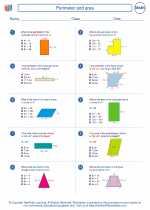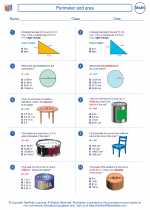Base in Mathematics
In mathematics, the term "base" is used in different contexts, including number systems, exponents, and geometric shapes. Understanding the concept of base is important in various mathematical operations and applications.
Number Systems
In the context of number systems, the base refers to the number of different digits or combination of digits that a system of counting uses to represent numbers. The most commonly used number systems are:
- Decimal (Base-10): The decimal system uses 10 different digits (0-9) to represent numbers. Each place value in a decimal number represents a power of 10. For example, in the number 532, the 5 represents 5 x 100, the 3 represents 3 x 10, and the 2 represents 2 x 1.
- Binary (Base-2): The binary system uses only two digits (0 and 1) to represent numbers. Each place value in a binary number represents a power of 2. For example, the binary number 1011 represents (1 x 2^3) + (0 x 2^2) + (1 x 2^1) + (1 x 2^0) = 11 in decimal.
- Hexadecimal (Base-16): The hexadecimal system uses 16 different digits (0-9 and A-F) to represent numbers. Each place value in a hexadecimal number represents a power of 16.
Exponents
When working with exponents, the base refers to the number that is being multiplied by itself a certain number of times. In the expression an, "a" is the base and "n" is the exponent. For example, in the expression 23, the base is 2 and the exponent is 3, which means 2 is multiplied by itself 3 times (2 x 2 x 2 = 8).
Geometric Shapes
In geometry, the term "base" is often used to refer to the bottom side or face of a 3-dimensional shape, such as a triangle, rectangle, or pyramid. The base of a shape is the side or face on which the shape rests. For example, in a triangle, the base is the side on which the triangle stands, and in a rectangular prism, the base is one of the two parallel and congruent faces.
Study Guide
To understand the concept of base in mathematics, it's important to:
- Learn about different number systems and how to convert numbers between different bases.
- Practice working with exponents and understanding the relationship between the base and the exponent in exponential expressions.
- Explore geometric shapes and identify the bases of various 3-dimensional figures.
- Apply the concept of base in solving mathematical problems and real-world applications.
Understanding the concept of base is fundamental to many areas of mathematics and has wide-ranging applications in fields such as computer science, engineering, and finance.
Hopefully, this study guide provides a comprehensive overview of the concept of base in mathematics.
[Base] Related Worksheets and Study Guides:
.◂Math Worksheets and Study Guides Eighth Grade. Perimeter and area

 Worksheet/Answer key
Worksheet/Answer key
 Worksheet/Answer key
Worksheet/Answer key
 Worksheet/Answer key
Worksheet/Answer key
 Worksheet/Answer key
Worksheet/Answer key
